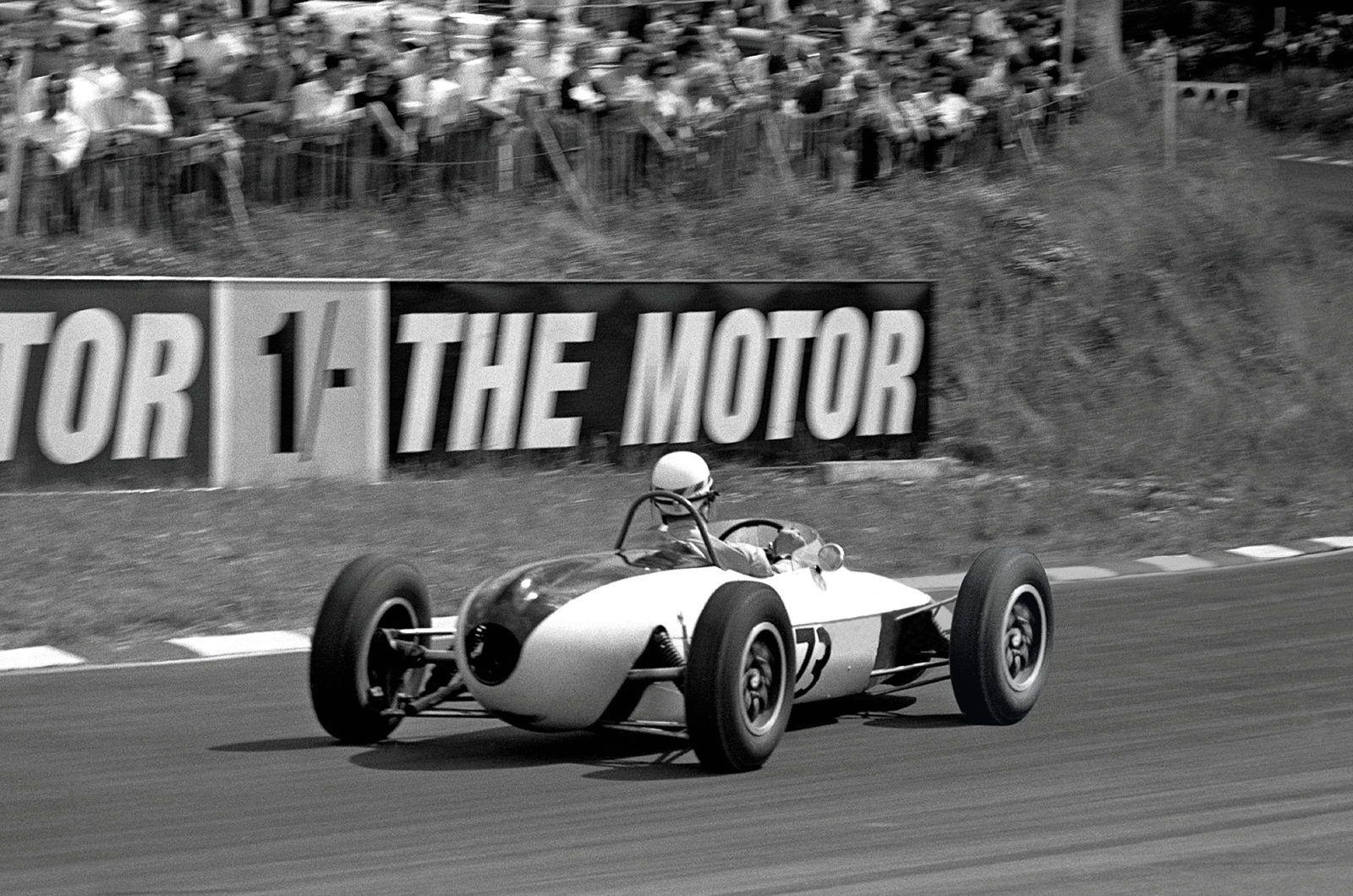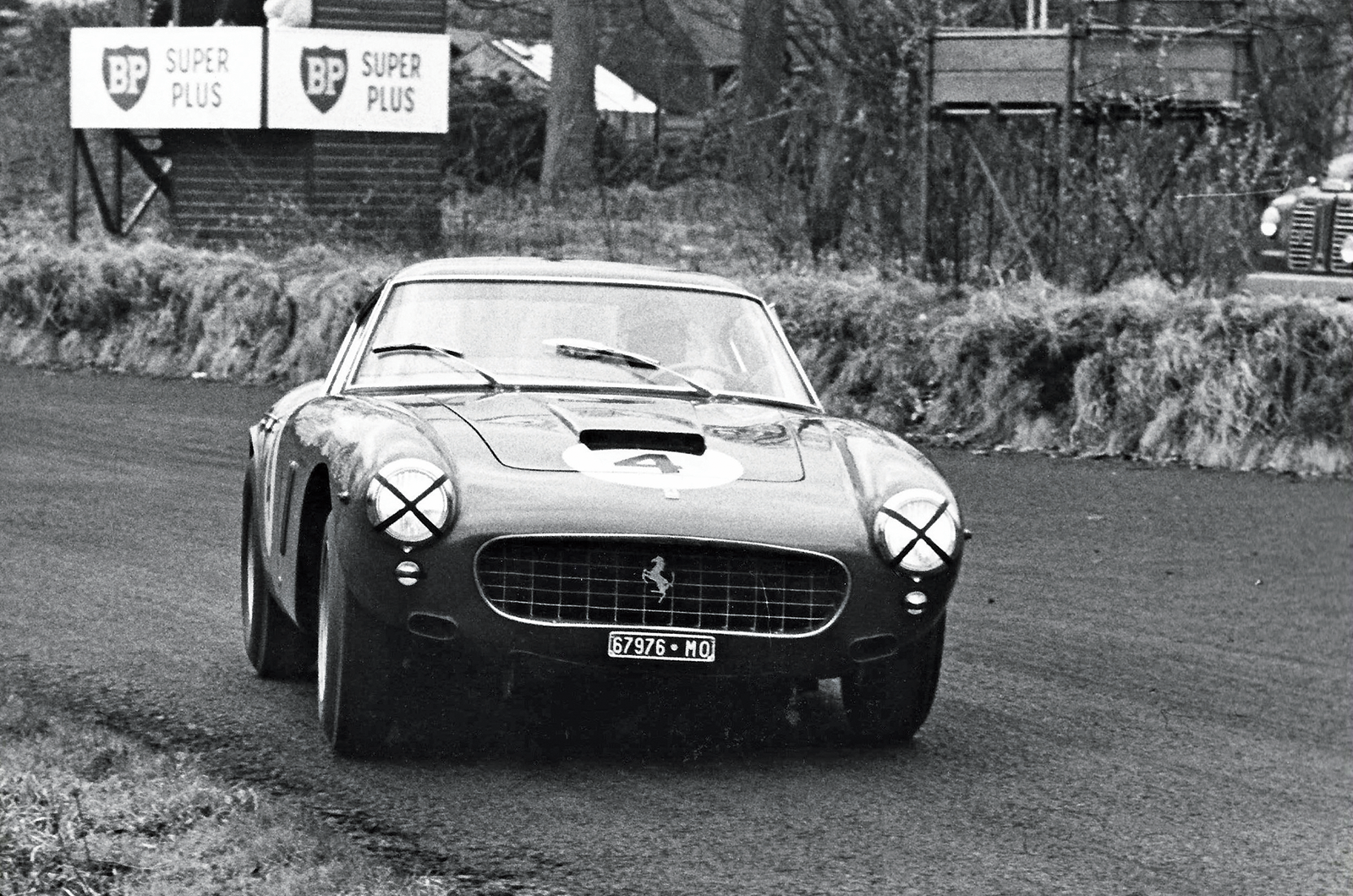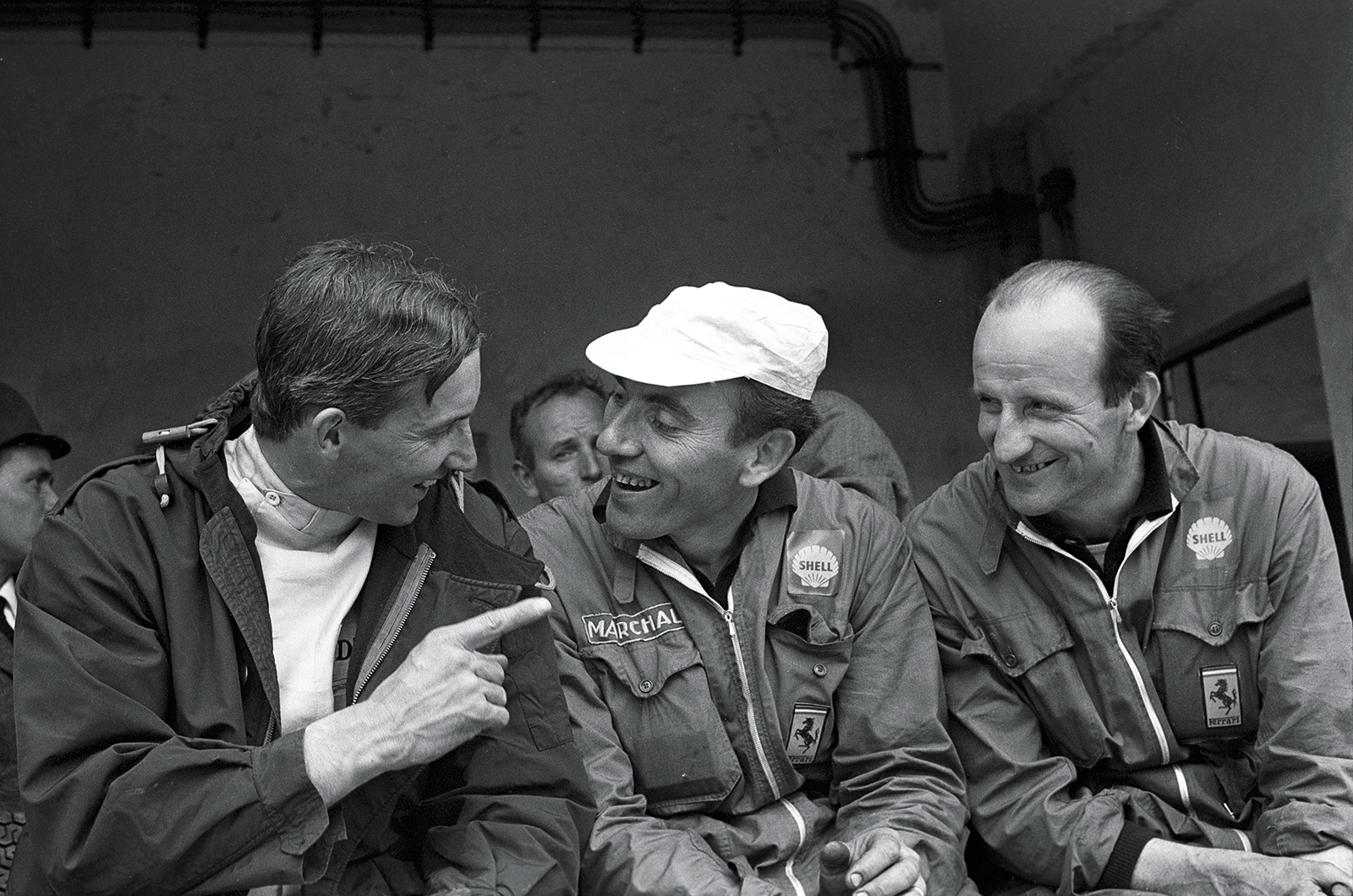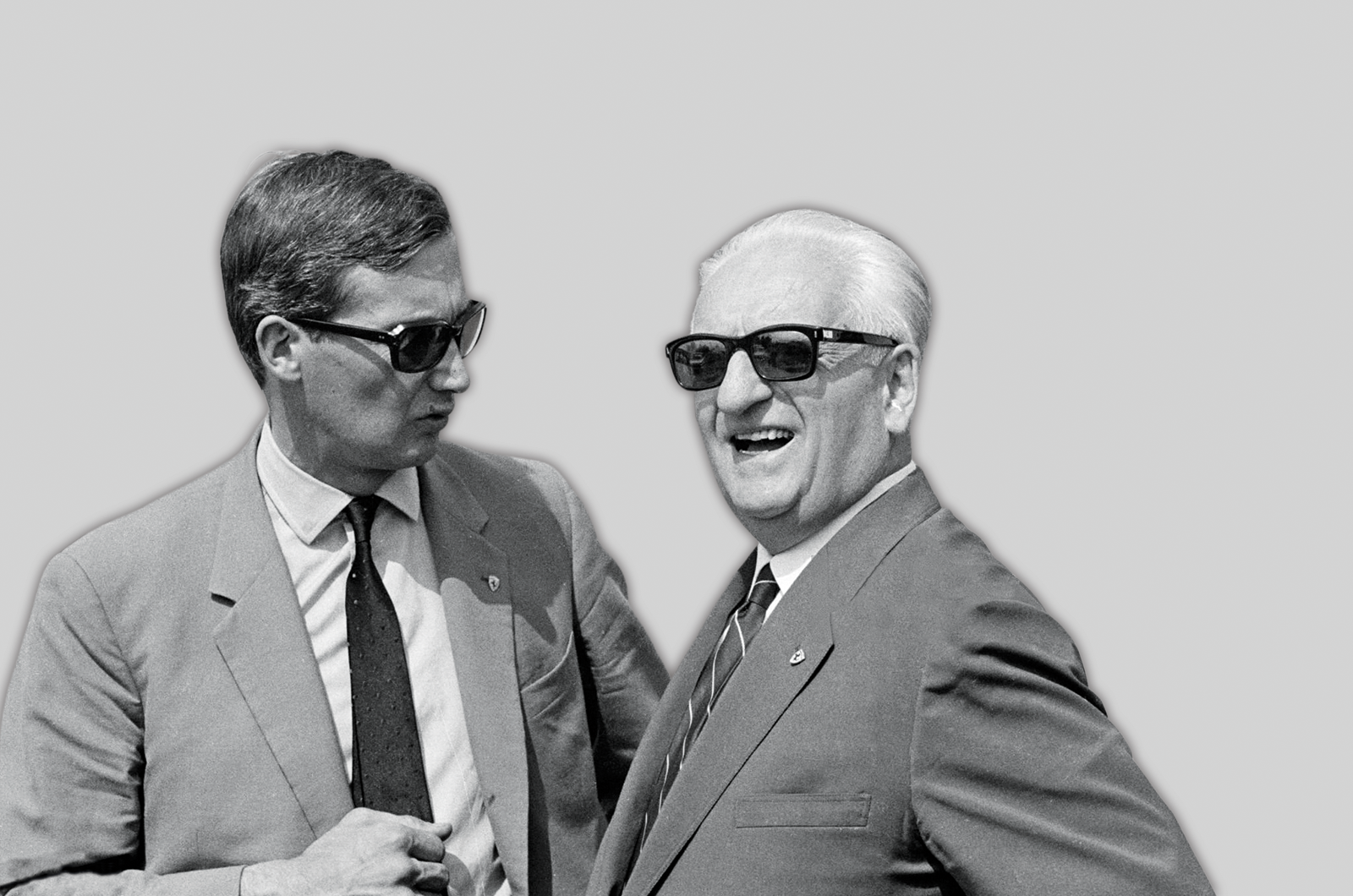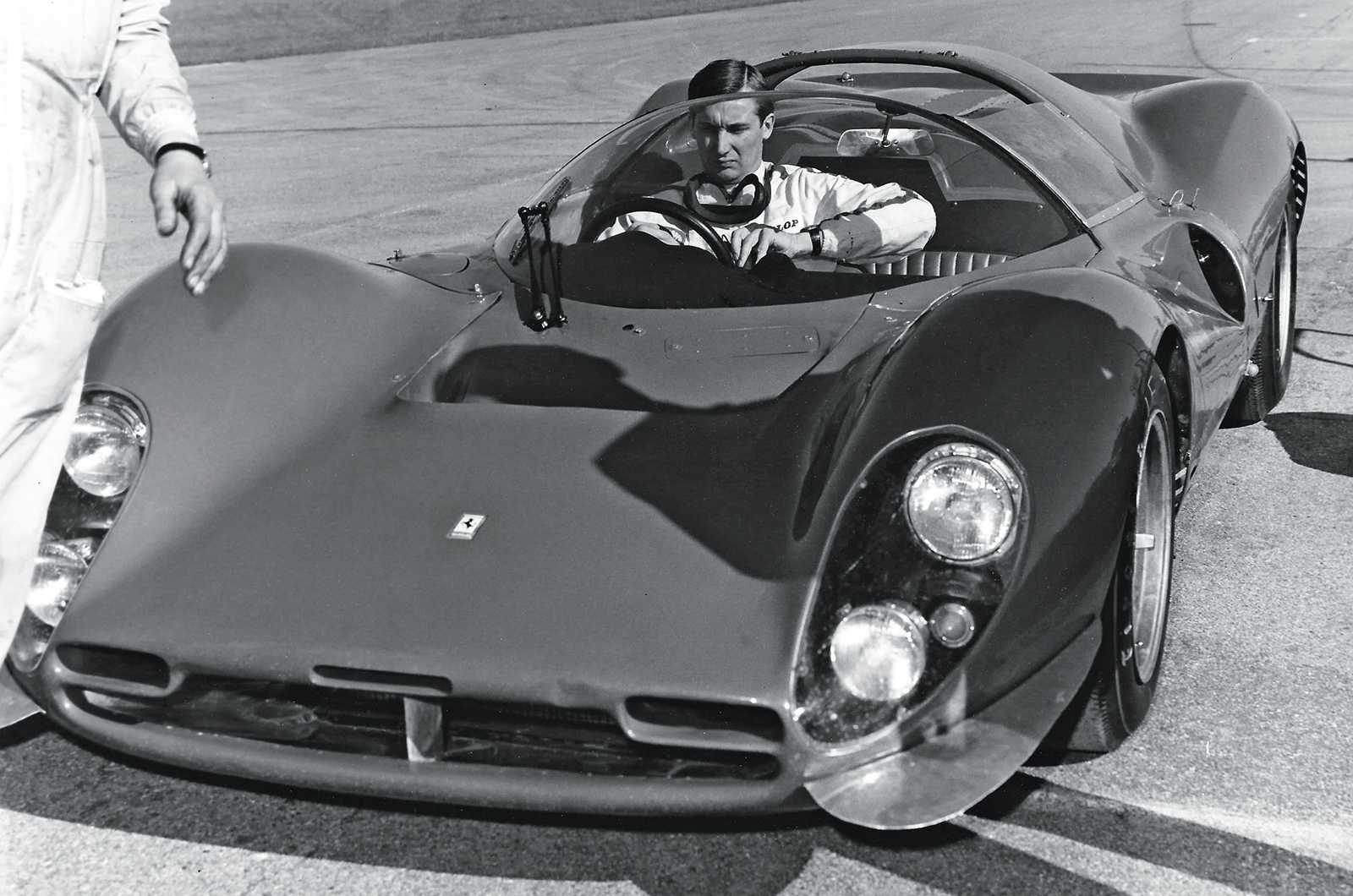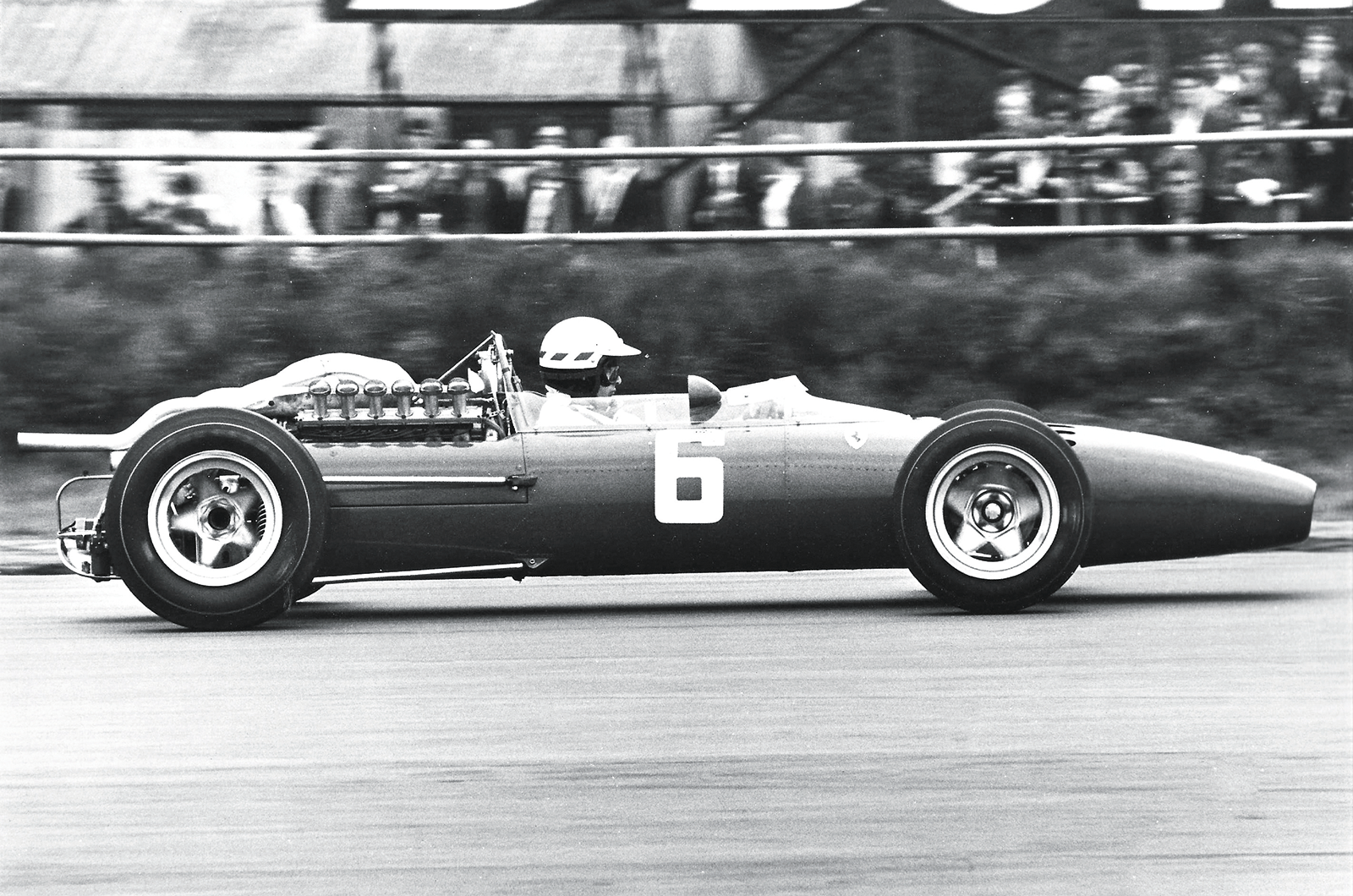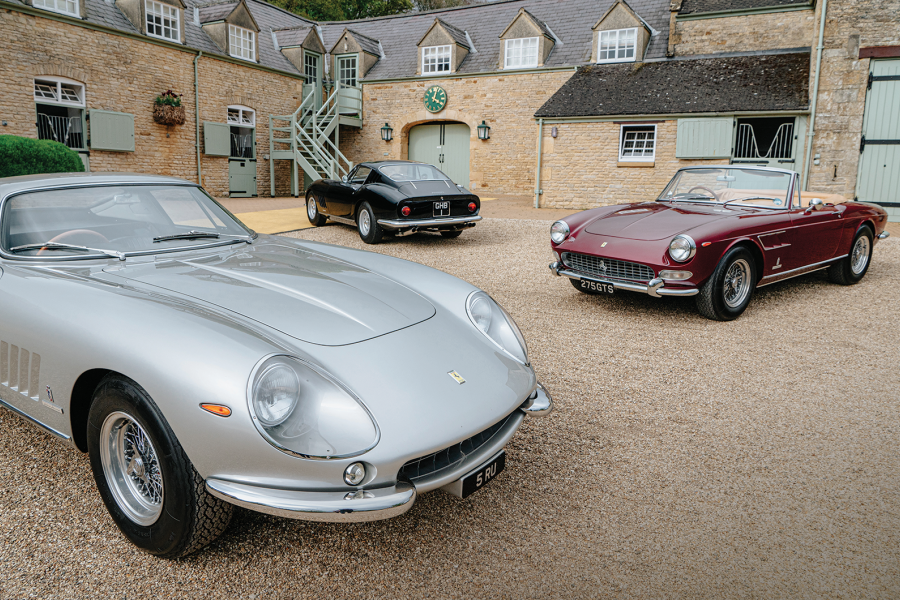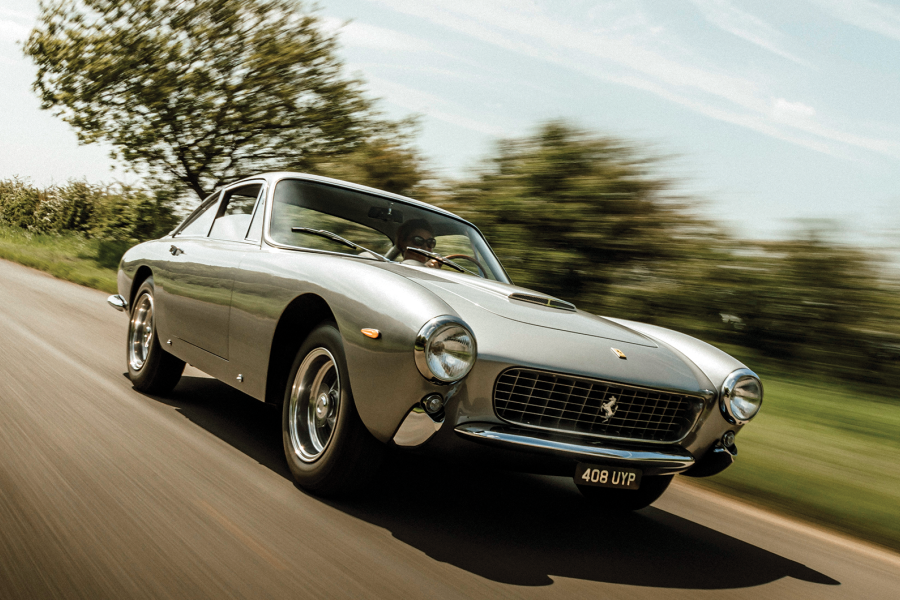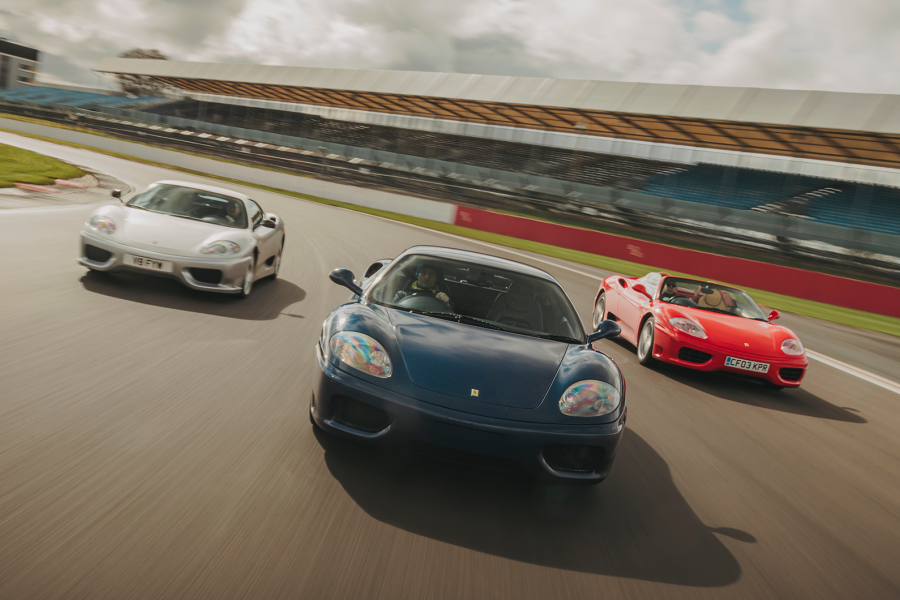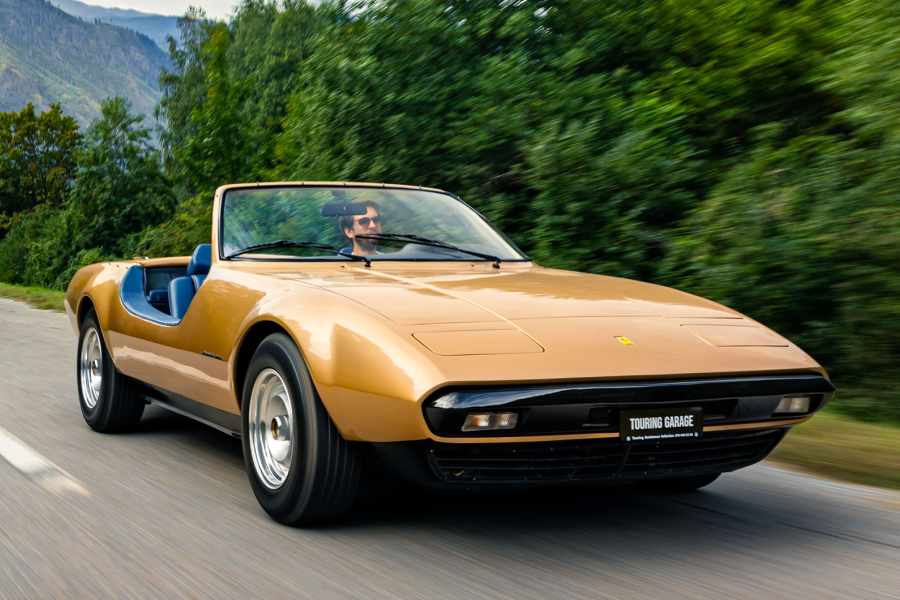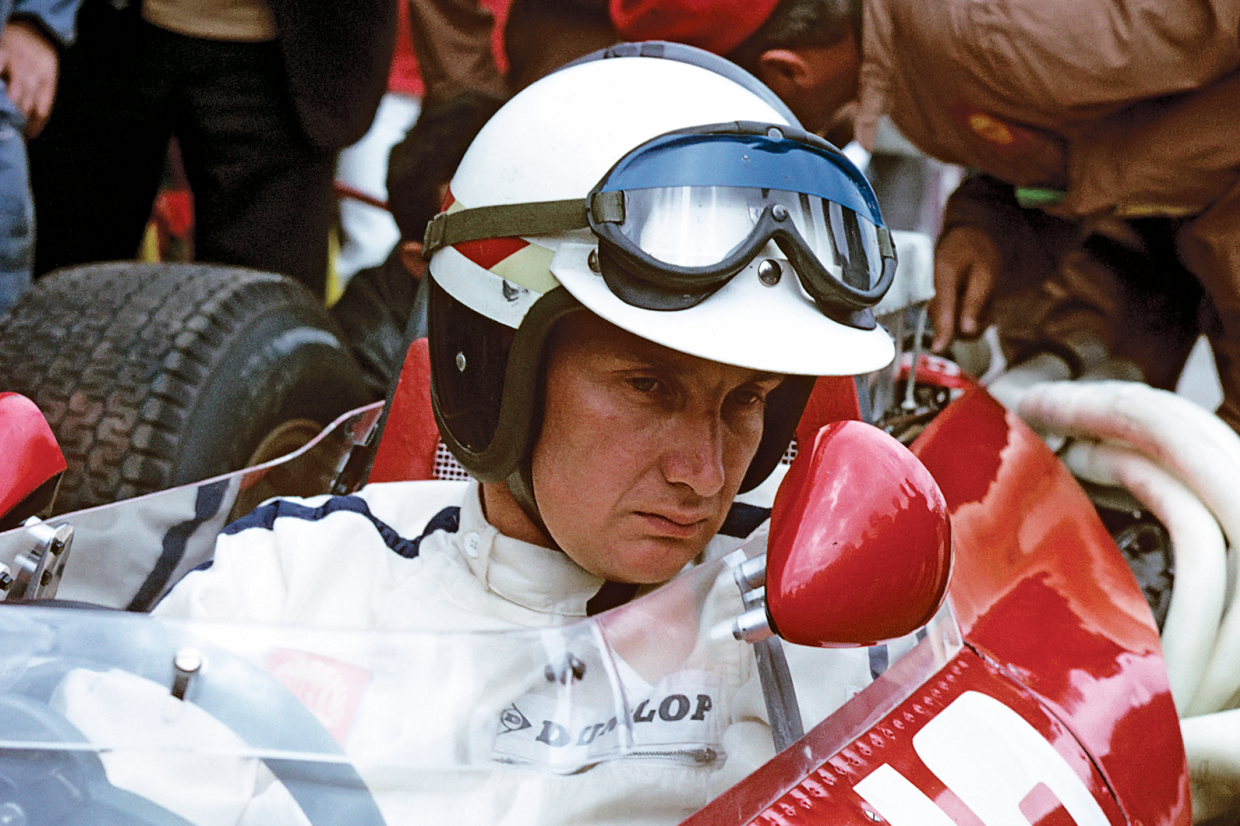
He was the first of his kind. Alas, he was also the last.
Mike Johnson Parkes was a man apart from the world he inhabited.
His outsized stature at Ferrari during the 1960s – both within the Scuderia and the road-car department – was such that he was in effect handed the keys to the castle.
He had the ear of Il Commendatore and his trust, yet ‘Parkesi’ walked away to compete for a privateer squad at an age when most drivers have retired.
Oh, and he also co-authored the Hillman Imp.
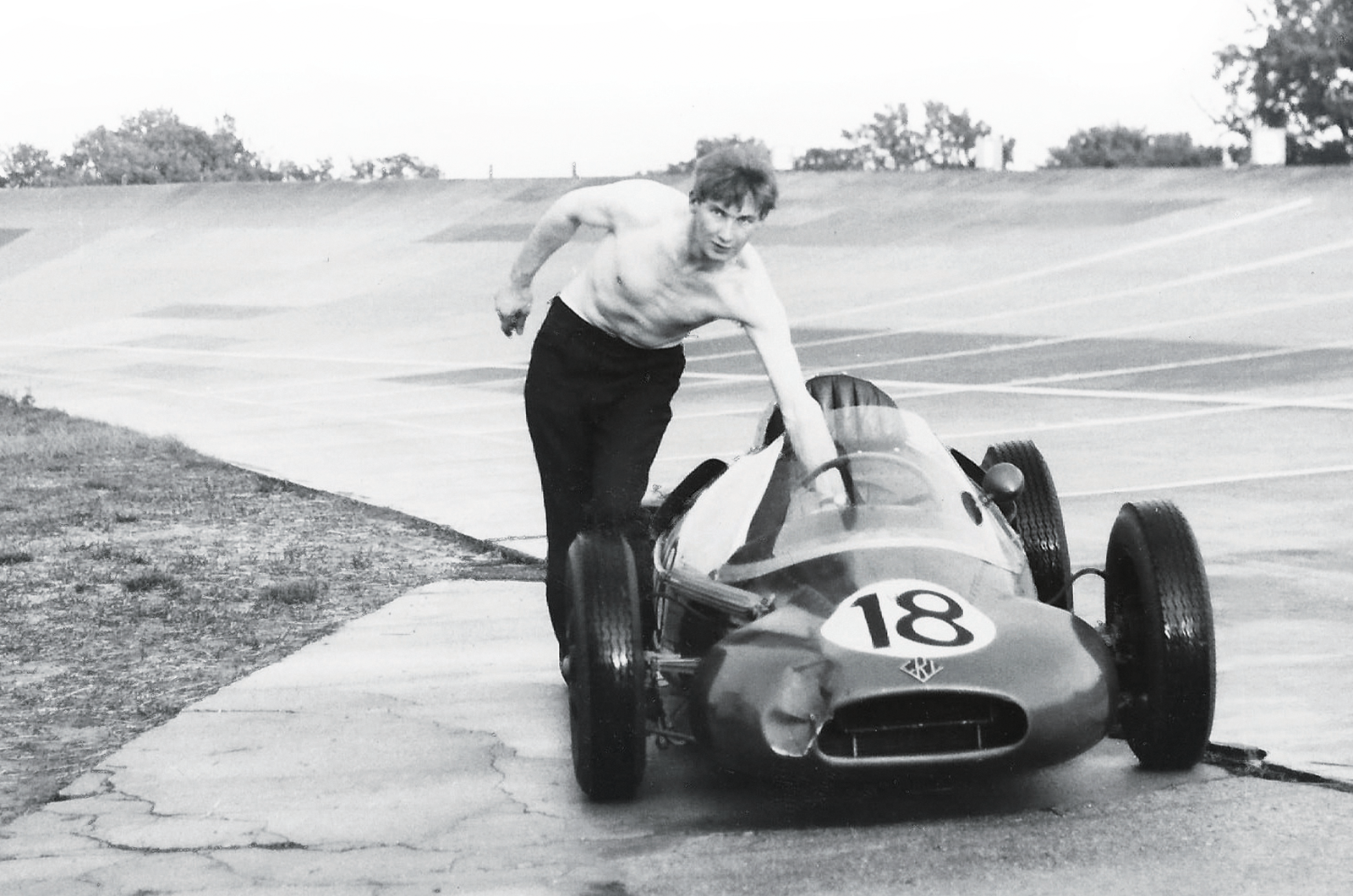
Mike Parkes wheeling his Fry-Climax after retiring during the 1958 Coupe du Salon at Montlhéry
He remains a difficult man to pigeonhole, that’s for sure.
Parkes was the public schoolboy who made his name at Rootes in the 1950s, propelled as much by the arrogance of youth as pencil-chewing contemplation.
He was the club racer who, in his mid-30s, made the leap to Grand Prix pilot.
He was the development jockey who terrorised the locals in and around Maranello in many a Ferrari wearing PROVA plates.
He was the naturalised Italian who in the 1970s honed the Lancia Stratos into an era-defining rally weapon.

